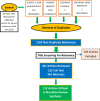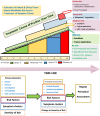Obstacles to Early Diagnosis and Treatment of Pruritus in Patients with Chronic Kidney Disease: Current Perspectives
- PMID: 36510564
- PMCID: PMC9739055
- DOI: 10.2147/IJNRD.S294147
Obstacles to Early Diagnosis and Treatment of Pruritus in Patients with Chronic Kidney Disease: Current Perspectives
Abstract
Chronic kidney disease-associated pruritus (CKD-aP) is a common condition amongst patients with advanced chronic kidney disease (CKD). Several studies have confirmed that more than four out of ten early-stage CKD patients suffer from this condition, while its prevalence among CKD patients on dialysis reaches up to seven out of ten. It is noted to be associated with other disabling symptoms and serious outcomes. It has significant impact on sleep, mood, daily activities, and quality of life of CKD patients, and increased mortality risk of patients on hemodialysis. The Dialysis Outcomes and Practice Patterns Study found 17% higher mortality among patients with moderate to extreme pruritus compared with patients with no or mild pruritus. Despite its high prevalence, ill-effect, and suffering associated with it, CKD-aP remains surprisingly under-reported on the patient's part and under-recognized by the healthcare team. Even upon being noticed, it remains unattended and poorly treated. Its etiopathogenesis is complex and not fully understood. Many treatment options are available but good quality evidence about most of those is absent, and to date, only two medications are approved for use in this condition. While a validated guideline is very much required for the benefit of the patients and caretakers, further research on several aspects of this issue is required.
Keywords: CKD-aP; chronic kidney disease; chronic kidney disease-associated pruritus; itching; pruritus; uremia; uremic pruritus.
© 2022 Jha et al.
Conflict of interest statement
Chandra Mauli Jha: The author has received travel and educational grant assistance from Fresenius, Amgen, and Roche in the past. There are no conflicts of interest in this work.Hormaz Dara Dastoor: The author has received assistance from Fresenius, Amgen, and Roche in the past. The author reports no conflicts of interest in this work.Natrajan Gopalakrishnan: The author reports no conflicts of interest in this work.Stephen Geoffrey Holt: The author reports no competing conflict of interest in this work.
Figures
References
Publication types
LinkOut - more resources
Full Text Sources




